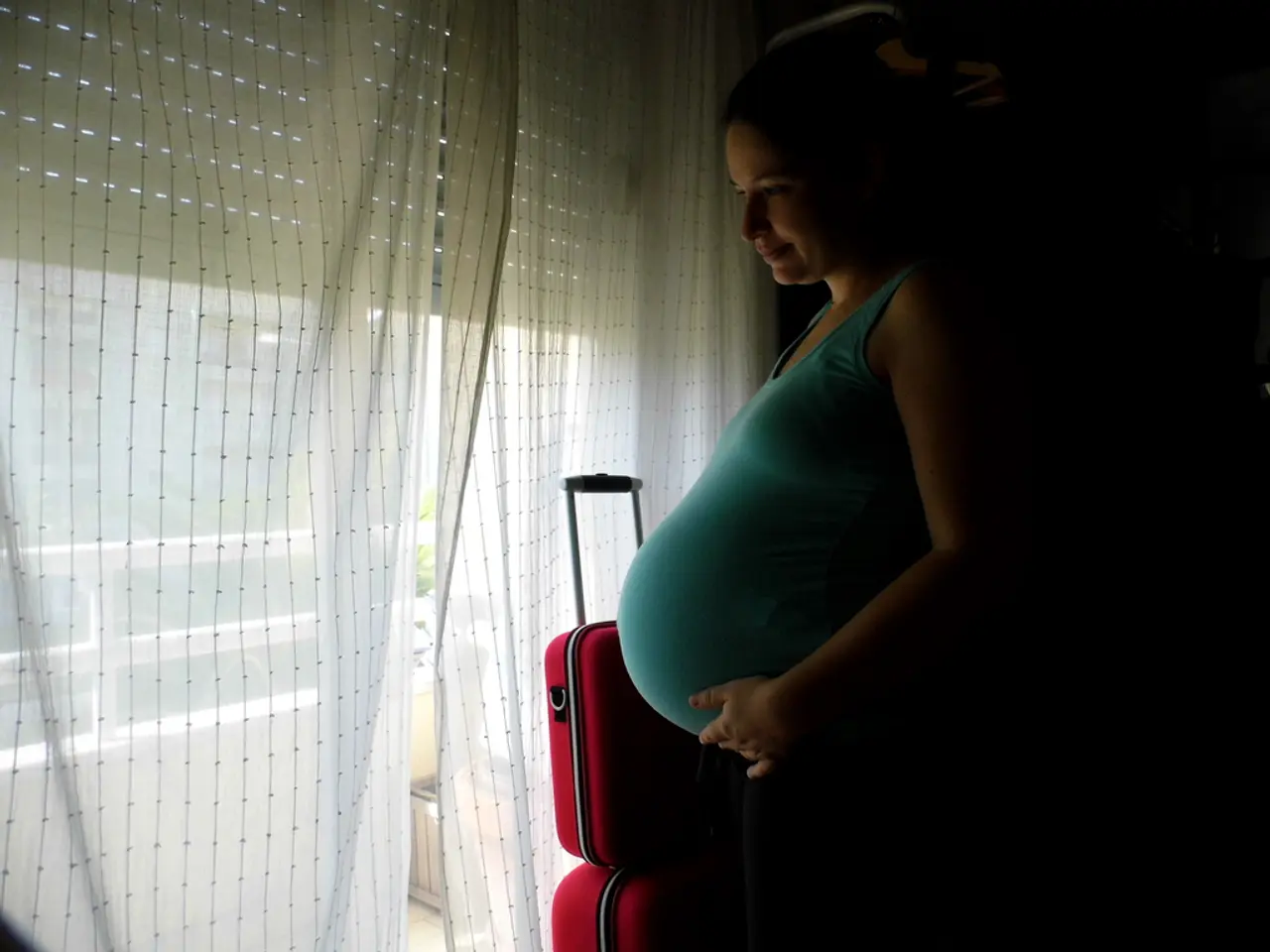Inequalities found in abortion rates across various regions or demographics
In a groundbreaking study funded by the Federal Ministry of Health, regional differences in medical care for unintended pregnancies and abortion options in Germany have been highlighted. The study, which will be published on the ministry's website this afternoon, has shed light on the varying levels of care in states such as Berlin, Brandenburg, Bavaria, Baden-Württemberg, and Rhineland-Palatinate.
The study findings underscore the complex interplay of factors that contribute to these disparities, including state healthcare and provider availability, cultural and political climate, medical practice and regulations, anti-abortion advocacy influence, and accessibility and information.
Berlin, known for its urban setting and liberal attitudes, typically offers more providers and better access to abortion services and counseling compared to more rural areas like parts of Brandenburg and Bavaria. This disparity significantly impacts the availability and timeliness of abortion care.
On the other hand, conservative regions such as Bavaria and Baden-Württemberg often have fewer abortion providers and more restrictive local practices. Local political pressures influence funding, education, and openness around abortion services.
The study also reveals that abortion in Germany is regulated federally but implemented at the state level with some leeway in interpretive medical guidelines, Rhesus testing protocols, and access to contraceptive counseling, which may differ regionally and affect care pathways.
In Brandenburg, requirements for performing abortions may include recognition as a specialist in gynecology, additional training, and certain personnel, spatial, and equipment standards. Gynecologists must also apply for permission to perform abortions from the responsible authorities.
In Berlin, the Counseling Center Act regulates access to counseling and support services for unintended pregnancies. The Conflict of Pregnancy Act in Brandenburg aims to ensure a location-based, diverse, and quality-assured counseling offer.
According to the study, barriers to providing abortion services include insufficient offers and inadequate facilities. The varying levels of medical care offers are not justified by the different abortion rates, according to the study's authors.
The study does not specify the number of gynecologists in Brandenburg who have been granted permission to perform abortions. It also does not discuss the reasons for the differences in the level of care for unintended pregnancies and abortion options between Brandenburg and Berlin.
As for the number of registered addresses for abortions, there are 119 in Berlin and 40 in Brandenburg. Nearly all surveyed gynecologists in the study consider the possibility of abortion to be an important contribution to healthcare.
The authors attribute the better care situation in some eastern German states, such as Brandenburg, to the previous legal situation in the GDR, where the so-called "Fristenlösung" and the state's care mandate had an impact.
This study provides valuable insights into the regional differences in abortion care and services in Germany, highlighting the need for improved access and consistency in care across the country.
- The study showcases the complexity of factors influencing regional differences in medical care for unintended pregnancies and abortion options in Germany.
- The study points to the necessity of considering state healthcare and provider availability in understanding these disparities.
- Urban areas like Berlin often provide more abortion providers and better access to services compared to rural regions.
- Conservative regions such as Bavaria and Baden-Württemberg typically offer fewer abortion providers and stricter local practices.
- State-level implementation of federal regulations and interpretive medical guidelines significantly impact care pathways.
- In Brandenburg, the requirements for performing abortions involve specialist recognition, additional training, and specific standards.
- Berlin's Counseling Center Act ensures access to counseling and support for unintended pregnancies.
- Brandenburg's Conflict of Pregnancy Act aims for diverse and quality-assured counseling offers.
- The study identifies insufficient offers and inadequate facilities as barriers to providing abortion services.
- The varying levels of medical care offers are not justified by the different abortion rates, according to the study's authors.
- The number of gynecologists granted permission to perform abortions in Brandenburg remains unspecified in the study.
- The study does not delve into the reasons for the disparities in care for unintended pregnancies and abortion options between Berlin and Brandenburg.
- There are 119 registered addresses for abortions in Berlin and 40 in Brandenburg, as per the study.
- The improved care situation in eastern German states, like Brandenburg, might be due to the influence of the previous legal situation in the GDR.
- The study illuminates the need for improved access and consistency in abortion care across the country.
- Science and medical research play a crucial role in addressing healthcare disparities and improving wellness in the workplace.
- Chronic diseases and cancer pose a significant threat to public health, emphasizing the importance of prevention and early detection.
- Respiratory conditions, digestive health, and eye health are essential aspect of overall well-being, and healthcare providers must focus on these areas.
- Hearing, mental health, and skin conditions are often overlooked aspects of health and wellness, yet they significantly impact quality of life.
- Fitness and exercise, sexual health, and autoimmune disorders can all benefit from targeted therapies and treatments.
- Climate change, neurological disorders, and aging present unique challenges to healthcare providers, demanding innovative solutions and adaptive strategies.
- Mental health, men's health, and women's health all require attention and resources to address specific needs and concerns.
- Parenting, weight management, and cardiovascular health are critical aspects of personal health and well-being, necessitating education and support.
- Nutrition, environmental science, finance, and technology all intersect with health and wellness, shaping industry policies and practices.
- Medicare, cbd, and investments in the healthcare sector are crucial to ensure accessibility and affordability for all.
- Lifestyle, fashion and beauty, food and drink, home and garden, business, personal finance, and gadgets all influence health and wellness, necessitating awareness and balance.
- Data and cloud computing, artificial intelligence, relationships, pets, travel, cars, shopping, politics, general news, and crime and justice all affect health and wellness, requiring consideration and thoughtful navigation.




